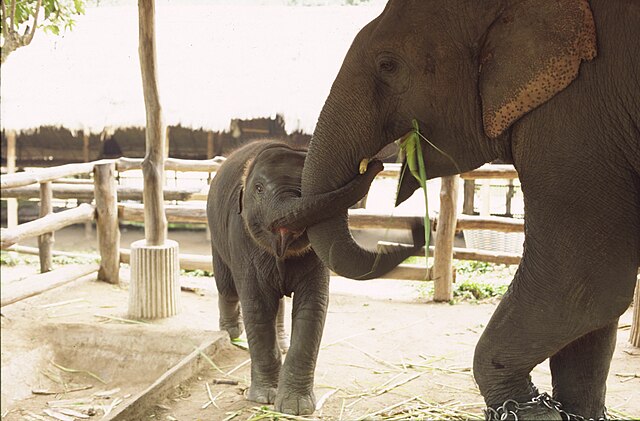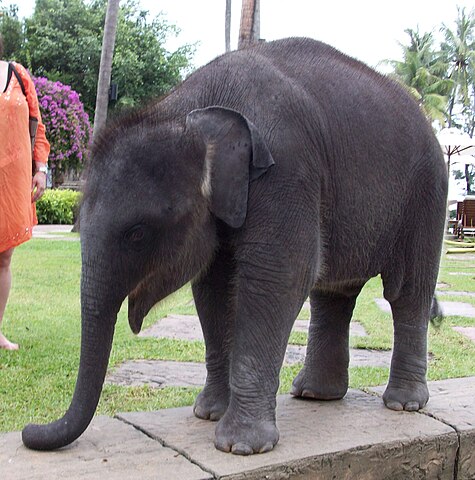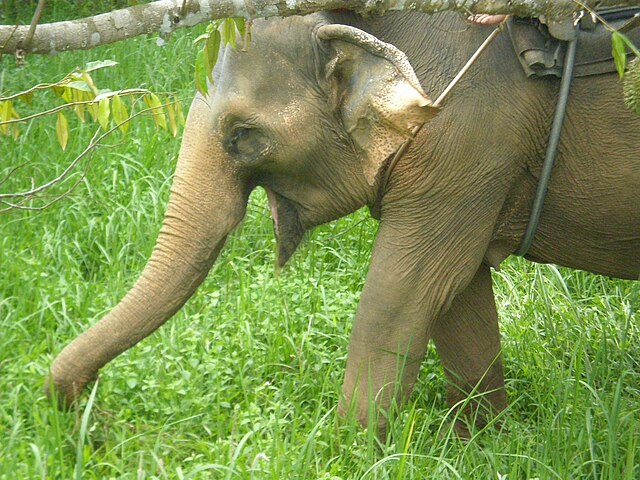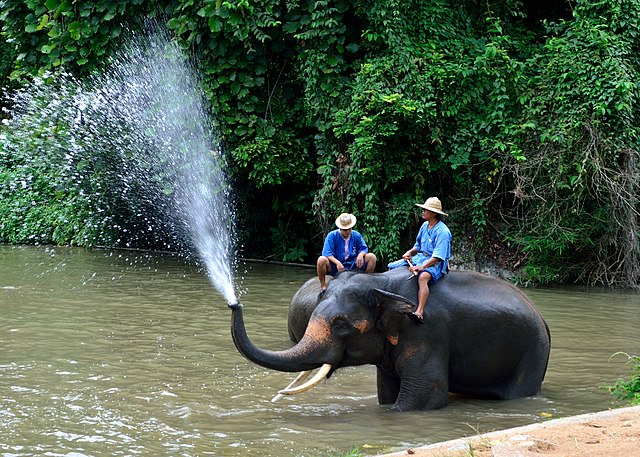You probably saw the news that a wild elephant in Khao Yai National Park near Bangkok stomped on a car. Another elephant, or possibly the same one, also attacked a shop and restaurant in the park. Khao Yai National Park director Kanchit Srinoppawan says this is due to the elephant’s mating season, but it is especially timely that the Thammasat University Libraries have acquired a book, Elephants and ethics: toward a morality of coexistence, to explain the problem.
Elephants and ethics: toward a morality of coexistence examines how human beings and elephants have lived together over the centuries, although this shared life has not always been fun for the elephants. People have used elephants to carry things and as vehicles in battle. Elephants have been killed for the ivory in their tusks, as well as to clear areas they inhabited. They have been shown off at zoos and circuses, but also honored during religious observances. Elephants and ethics asks how the animals have been affected by this treatment, and what can be done to improve their lives, so they do not become extinct. The editors of this volume, Christen Wemmer, a former scientist at the Smithsonian’s National Zoological Park, and Catherine Christen, an environmental historian, collected essays by a number of international experts. They discuss what are the most urgent matters relating to elephants, and how we can best live together with these fascinating creatures. The more we understand how elephants think and behave, the more we realize when they are unhappy about treatment as captives. Since in Asia, elephants are widely used for work purposes, how this can be done humanely is also examined. Finally, the attempt to share spaces with humans in nature parks, hunting areas, and the countryside are studied. Since it is up to human beings whether elephants will survive as a species in future years, Elephants and ethics tries to look at problems in culture, conservation, and economics involving elephants.

What will the future bring?
Under the Endangered Species Act (1973), Asian elephants are classified as endangered. An endangered species is considered by the International Union for Conservation of Nature as likely to become extinct. African elephants are considered threatened. Threatened species might become endangered in the near future. While the situation is not good for either Asian or African elephants, right now it is worse for Asian ones. The TU Libraries collection has other books on elephants, their story and preservation.

How many elephants live in Thailand?
As we all know, in Thailand, elephants are symbols of the King’s divine right to rule. They also signify good luck, and serve as religious icons. According to one estimate, Thailand has only around 2,700 domesticated elephants remaining, whereas around 100,000 lived in captivity just over 150 years ago. 95% or so of Thai elephants are privately owned. The Thai Elephant Conservation Center has 80 elephants, which are the Kingdom’s only government-owned elephants along with a few in zoos and His Majesty the King’s ten white elephants in the Royal Elephant Stable.
The Thai Elephant Conservation Center

There are perhaps another 2500 wild elephants left in Thailand, although some estimates claim there may actually be fewer than 1000 left. After 1989, when the Thai government banned logging in protected areas, elephants were used in tourism. It is estimated that over half of Thai elephants are employed in the tourist industry. There is disagreement between elephant handlers in the Kingdom and animal rights advocates overseas about whether this is a good thing or not. Thai elephant handlers point out that earning money from elephant camps for tourists allows them to pay for the animals’ expensive upkeep.
To ride on elephants or not?
Since even in captivity, elephants remain undomesticated with a will of their own, some tourists object to the training methods that are used to convince the animals to allow people to ride on them. They mention the educational process known as phajaan, or crushing the baby elephants’ spirit by putting them in a small space and beating them until they are motivated to work and behave the way humans want them to. This was reported in the National Geographic Magazine over ten years ago.
Since visitors to some elephant camps do not know how the animals have been treated in past years, it may be safest to admire and enjoy the animals without riding on them. Meanwhile, in enlightened places like the Elephant Nature Park in Chiang Mai, the spokesperson Daeng Chaidee explains that the focus is on education: “Much like the western world forty years ago, there is very little awareness about animal cruelty in Thailand. We host a number of Thai student groups and are starting to see more Thai support, but time is needed before a general population consensus can be established.” The Thai Animal Guardians Association hopes this may happen sooner rather than later, before all the elephants are gone:
(all images courtesy of Wikimedia Commons).


